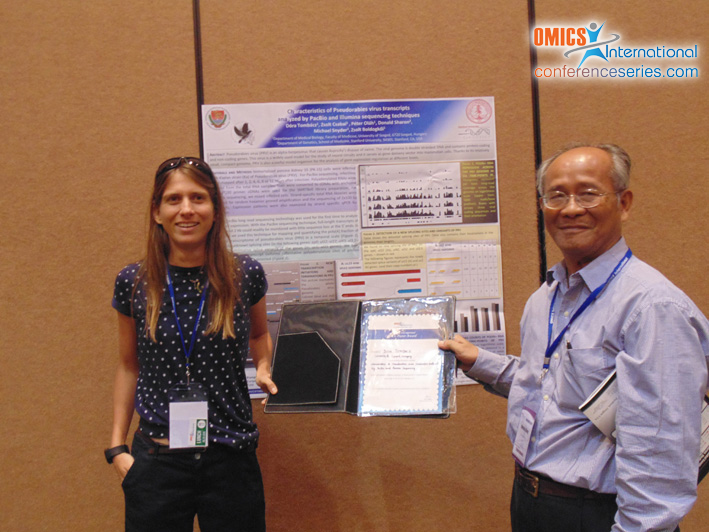
Dora Tombacz
University of Szeged, Hungary
Title: Characteristics of Pseudorabies virus transcripts analyzed by PacBio and Illumina sequencing techniques
Biography
Biography: Dora Tombacz
Abstract
Introduction
Pseudorabies virus (PRV) is an alpha-herpesvirus that causes Aujeszky’s disease of swine. The viral genome is double stranded DNA and contains protein-coding and non-coding genes. This virus is a widely used model for the study of neural circuits and it serves as gene delivery vector into mammalian cells. Thanks to its relatively small, compact genome, PRV is also a useful model organism for the analysis of gene expression regulation at different levels.
Materials and Methods
Immortalized porcine kidney 15 (PK-15) cells were infected with Kaplan strain (Ka) of Pseudorabies virus (PRV). For PacBio sequencing, infections were stopped after 1, 2, 4, 6, 8 or 12 hours after infection. Polyadenylated RNAs were isolated from the total RNA samples, then were converted to cDNAs with anchored Oligo(dT)20 primer. cDNAs were used for the SMRTBell library preparation. For Illumina sequencing, we mixed infected cells. Strand-specific total RNA libraries were prepared for random hexamer primed amplification and the sequencing of 2x100 bp fragments. Expression patterns were also examined by strand specific qPCR for validation.
Results
PacBio long read sequencing technology was used for the first time to analyze viral gene expression. With the PacBio sequencing technique, full-length transcripts of up to about 2 kb could readily be monitored with little sequence loss at the 5′ ends. We have detected 27 new transcript isoforms (alternative polyadenylation sites of protein coding genes). Previously unknown splicing sites (in the following genes: ep0; ul12; ul22; ul43; ul3.5), alternative splice variants of the genes (in: us1; ul15 genes) were also detected.



